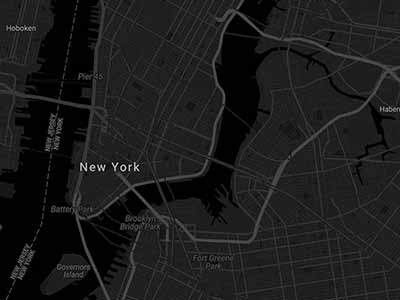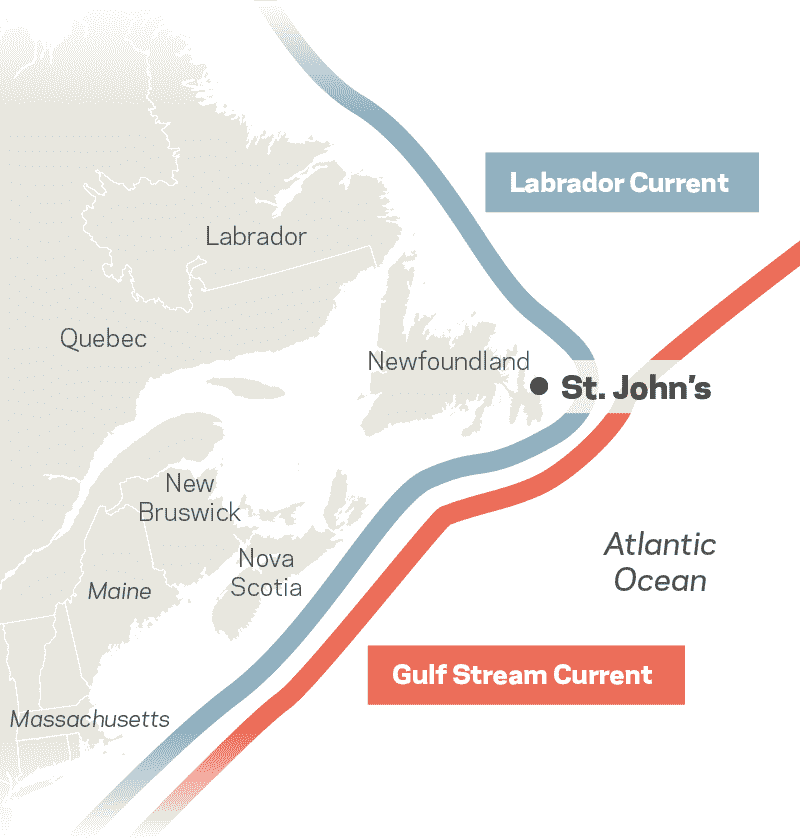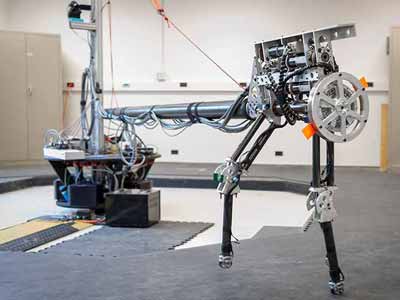
Notre Dame engineer studies coastal fog to improve weather forecasting
Since the era of the ancient mariners, fog has bedeviled sailors of every stripe. Whether intrepid explorers or Caribbean buccaneers, ship captains faced with a bank of sudden fog quivered at the prospect of navigating in total blindness.
Modern ships come equipped with advanced radar systems, yet just last year, a Russian naval ship collided with a merchant vessel in a heavy fog off Turkey’s Black Sea coast. All 78 crew members were rescued, but the 1,560-ton ship sank to the bottom in a mid-afternoon.
And in 1995, fog off the coast of San Diego brought the America’s Cup sailing race to a halt when the USS Abraham Lincoln, a nuclear-powered aircraft carrier, blundered into the course. The ship had been conducting training exercises and was looking for a clearing in the fog to airlift passengers to shore when it emerged from the mist and stopped just 200 yards from the sailing yachts and a spectator fleet.
Fog is one of the most difficult meteorological phenomena to predict.
While fog was not the cause of two significant Navy crashes last year, the military is still concerned. Fog prevents plane takeoffs or landings on aircraft carriers, affects their weapons systems, disrupts helicopter operations and slows their cruising speed. Fog’s impact on the transportation industry is considered more disruptive than tornadoes and lightning storms.
Yet unlike these other storms, fog prediction is abysmal — around 50 percent correct. Like flipping a coin. Complex interactions between ocean currents and air turbulence, plus the physical and thermodynamic processes that range from vapor saturation to radiation, are poorly understood. How fog forms, how long it lasts and how it dissipates are also hazy.
H. Joseph Fernando, a Notre Dame mechanical engineer specializing in fluid dynamics, aims to change that with a two-year, $4 million research project in Newfoundland, Canada, known as the fog capital of the world. Though many of the great minds in science have studied the mysteries of fog, Fernando specializes in generating the base-level scientific measurements to build complex weather models with the latest meteorological equipment and computer codes. And he has considerable experience organizing large multidisciplinary teams to study a wide range of weather-related projects.
Fernando is the principal investigator of the C-FOG (coastal fog) project that included a month-long field campaign of meteorological measurements on ship and shore in September. Sponsored primarily by the U.S. Office of Naval Research, C-FOG is a collaboration of researchers from Canadian and U.S. universities, as well as the militaries and other governmental institutions of both countries. They are even bottling some of the fog they encounter for later lab analysis.
“While its impacts are numerous and widespread, fog is one of the most difficult meteorological phenomena to predict, which explains why there is so much interest from university, industry and government stakeholders to participate in this study,” Fernando said.
May 29, 1914
One of the worst disasters in maritime history occurred on May 29, 1914, when two ships collided in a thick fog in the St. Lawrence River in Canada. The Empress of Ireland sailed from Quebec with 1,057 passengers and 420 crew members. A thick fog enveloped the ship about 2 a.m. near Pointe-au-Père.
A Norwegian coal freighter, the Storstad, slowed but did not stop, which standard procedure dictated during reduced visibility conditions. The freighter sliced through the midship hull of the stationary Empress, which turned on its side and sank in 14 minutes. A few hundred crew members and passengers survived, but more than 1,000 people were killed.
Newfoundland, like San Francisco and parts of Northern California, experiences steady fog throughout the summer. The 42,000-square-mile island has a population of more than half a million people and sits at the extreme eastern tip of North America, about 800 miles northeast of Maine. It’s so far out in the Atlantic Ocean it is two time zones farther than the U.S. Eastern zone, though the island chooses to turn its clocks just 1.5 hours ahead.
Newfoundland gets so much fog because the Labrador Current brings cold water from the north and passes the island very close to the Gulf Stream Current bringing warm water from the south. Warm air picks up moisture from the Gulf Stream and goes over the cool surface of the Labrador to create fog, such as when a mirror fogs during a hot shower. Wind blows it onshore. The currents pass each other and produce consistent fogs on a shallow shelf off the Newfoundland coast called the Grand Banks, one of the richest fishing grounds in the world.

Besides fishing, offshore oil drilling is a growing industry in the province. Helicopters are the primary means to reach the platforms, but fog makes the flights dangerous or impossible.
Fernando and his team chose September for their field study because they are studying fog formation and dissipation. The intermittent fogs of September allow scientists to measure the entire fog cycle, which a constant fog would not.
St. John’s is the largest city on Newfoundland, with a population of about 100,000 clustered around its large and well-protected harbor. High cliffs protected by old forts guard the harbor entrance. A lighthouse on nearby Cape Spear, the continent’s eastern tip, affords the first look at the rising sun in all of North America.
The battered and windswept landscape resembles western Ireland, the outer edge of northern Europe. In fact, a decent percentage of Newfoundland’s population claims Irish descent, and Irish bars are prominent along the commercial streets by the harbor, as are brightly painted townhomes with a historic feel.
Fernando’s team of scientists set up an extensive array of meteorological instruments along the coast to the north and south of the city. Eric Pardyjak, a former student of Fernando’s and now an engineering professor at the University of Utah, explains some of the instruments mining weather data.
An optical particle counter looks at small aerosols in the air. Pardyjak said moisture forms around these nuclei and swells into fog or mist. A ceilometer is an optical device that shoots a laser into the sky to measure the backscatter reflecting from clouds, a way of determining their depth and altitude.
Pardyjak’s graduate research assistant, Nipun Gunawardena, designed a low-cost weather station powered by a solar panel. It records seven key measurements ranging from surface temperature and aerosols to wind speed and radiation so that researcher can download the data every week or so. Radiation is important because fog will reduce sunlight but increase radiation as the top layer of the fog absorbs the sunlight above it.
At one site, Utah graduate student Travis Morrison climbed a 10-meter tower to attach three fragile thermocouples for an intense observation period. A thermocouple is a long, thin rod of two dissimilar metals. The differing metals create a small voltage in response to temperature change, which can yield precise temperature results.
“This data set provides two key results,” Pardyjak said. “We can provide real-time feedback to the Navy on the performance of their current models, and we can develop new models.”
March 31, 1931
The most famous crash in Notre Dame history is also linked to fog. Legendary football coach Knute Rockne boarded a flight on March 31, 1931, from Kansas City, where he was visiting his sons at school, to fly to Los Angeles to appear in a football movie. The $50,000 promised pay was five times that of his coaching salary.
The plane, a Fokker F-10 trimotor, took off into a light snowfall and got trapped in a thick fog. After losing part of its left wing, it crashed in a southeastern Kansas prairie, killing Rockne and seven others. The national outcry over the death of the beloved coach prompted changes in the fledgling aviation industry. A series of poorly performed investigations of the crash led to the creation of an independent agency overseeing investigations, as well as the building of safer and more reliable planes.
The research ship Hugh R. Sharp, operated by the University-National Oceanographic Laboratory System (UNOLS), embarked from Lewes, Delaware, on Aug. 31. It motored into St. John’s Harbour for fuel and supplies on Sept. 11 and made another stop in Halifax, Nova Scotia, on Sept. 25 before returning home on Oct. 6.
The ship carried dozens of meteorological instruments gathering data in coordination with the land-based instruments, as well as a half dozen scientists from different universities and agencies. The scientists include Notre Dame participants Charlotte Wainwright, a postdoctoral fellow; Sen Wang, a graduate student; and Jay Orson Hyde, a field technician.
The ship, crew and specialized operations cost the C-FOG project about $17,000 per day. Equipment includes a large tethered weather balloon on a 1,000-pound-strength Kevlar line that can rise to 1,500 feet and take measurements above and through the fog. Other probes are lowered into the ocean by an onboard crane to test for temperature, current and turbulence. Another collects the moisture in fog into bottles that are refrigerated for analysis.
Fernando checked on his million-dollar lidar (laser radar) system stationed on a top deck. He had hired a Hollywood specialist with patents in camera stabilization to build a custom gimbal for the machine with metal pipes and joints for an earlier field experiment, and now it keeps the system level despite the pitch of the ship. The lidar system shoots lasers in the air to measure wind speed, turbulence, aerosols and more.
“Everything is tight quarters on the ship, and it’s a challenge to fill all this instrumentation,” said Ed Creegan, the chief scientist aboard the ship. “Then everything you put on, you have to tie it down and run data and power cables to it.”
Creegan said they hit some rough waves in their first leg that caused sea sickness in much of the scientific crew. But they had also encountered the fog they are chasing offshore even when it did not touch land.
“We’re trying to find the triggers to give you a better ability to put into a model so that the model predictions will become more accurate and timely,” he said.
Fernando explained in more detail why fog is so hard to predict. Current Navy forecasting models work on a scale too large to consider the minute processes at which fog forms, he said.
“We go from hundreds of kilometers to a meter scale, then to micrometer with the tiny fog particles,” he said. “The question is if the model is predicting fog, does it ever see these particles? And it cannot because we don’t have the computer power in a natural prediction scale. The best we have is a two-kilometer scale.”
Fernando kids with his student, Wang, that this many coordinated measurements have never been taken before in fog research, “so we are hoping for some good things from you.”
July 19, 1960
One of the worst peacetime sea disasters in U.S. Navy history occurred on July 19, 1960. Two 376-foot destroyers, both veterans of World War II, collided in a heavy fog off the coast of Newport Beach, California. The Ammen was heading to San Diego for decommissioning after unloading its ammunition. The Collett was leaving San Diego for Long Beach, and both had crews of nearly 240.
The Collett was traveling at about 20 miles per hour when it spotted its fellow destroyer emerging out of the fog and took evasive action, but it was too late. Its bow sliced into the port of the Ammen, severely damaging its engine and fire rooms. The collision was so sharp that two crewmen were catapulted from the deck of one ship to the other. In all, 11 Ammen crewmen died and 20 were injured. If the Ammen had not unloaded its ammunition, both ships could have been blown apart. At a later court martial, the captains of both ships said their radars were working properly and that they could not explain why the warships had collided.
The Hugh R. Sharp sailed off into a blanket of fog at noon the day after it made port, planning a zigzag pattern a dozen nautical miles off the coast. Later at night, it hit a fog patch that lasted hours. However, the fog again did not touch land and the instruments set up on the coast.
The next morning, the lighthouse at Cape Spear was enveloped by a steady fog at sunrise, and a series of loud fog horns sounded on the water. Yet the meteorological equipment closer to St. John’s did not detect any fog. Fernando said this difference in a small area shows how fog formation can be so localized.
Current forecasts, discussed at a daily 1 p.m. meeting with forecasters in Halifax, Canada; Monterey and San Diego, California; and Ferryland, Newfoundland, called for conditions conducive to fog formation that evening. Fernando headed about an hour south to Ferryland, where his team had set up another battery of instruments.
Most of the day, the team waited for the fog offshore to roll into the coast, but it never did. Or did it? The instruments were set up along the shore at just above sea level, where fog never touched. But a low cloud blew in from the north and enveloped the hills a few hundred feet back from the coast. Were they clouds or fog? Does it depend on where one is standing?
Fernando said disagreement over the basic definition of fog contributes to its uncertainty. Fog is generally defined as water particles suspended in air that touch the ground and cause visibility to be reduced below one kilometer (about 0.6 miles). But it can be difficult to determine how to classify a low cloud, especially if one goes up a hill into its midst, which would feel like fog.
Some fog definitions divide it into warm and cold fog, depending on whether the water source saturating the air is warmer or colder than the air. The differential in either direction causes fog. Some definitions refer to its properties: radiative, precipitation, steam, ice and advection. Other definitions are geographical: coastal, marine, valley or upslope.
Even if he can’t end the definition debate, Fernando hopes that the unprecedented collection of measurements over sea and land simultaneously can improve the current forecasting models. Even on a day lacking fog, C-FOG’s detailed measurements could show where the current prediction models went wrong.
One of Fernando’s strong traits as an investigator is that he doesn’t let failed experiments scuttle the project. A few years back at a mountain weather experiment in Utah, his expensive drone plane crashed and broke. But he designed multiple redundant ways to collect basic information from wind speed to temperature to air pressure, so the project still worked to improve mountain weather forecasting near airports.
As the wind keeps pushing the fog back out to sea, Fernando said the lack of fog just shows why this research is necessary. He helps his team collect more data with a disposable weather balloon, equipped with an equipment package called a sond that beams the measurements directly to a laptop computer. The balloon will burst at 30,000 feet, and the sond will fall to the ground and be lost. Another $300 blown away with the wind.
A few days later, the fog indeed touched down on the coastal monitoring equipment. By project’s end, the C-FOG scientists should better understand the exact weather conditions in which fog forms. If the Navy wants to conduct an exercise with one of its aircraft carriers, they should be able predict which day would be clear of fog. If a company need to move goods, it may choose a train rather than a truck when fog is forecast.
Staring at the fog beyond a lighthouse lit by a ribbon of sunset peeking through clouds on the eastern edge of the continent, Fernando said, “We have to be able to do better than 50-50.”
